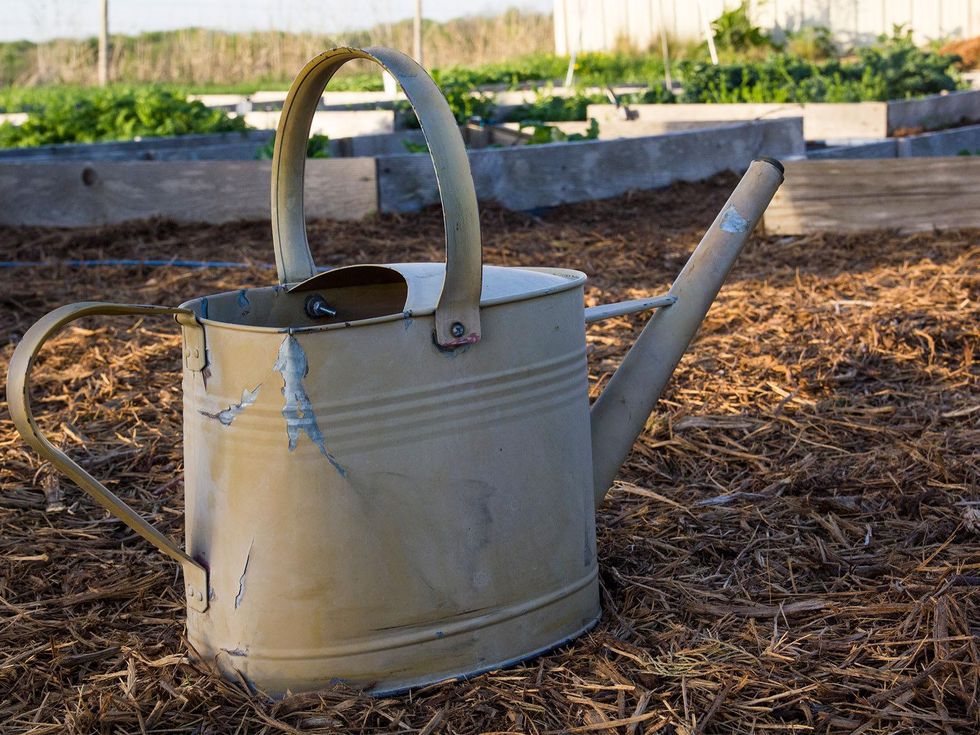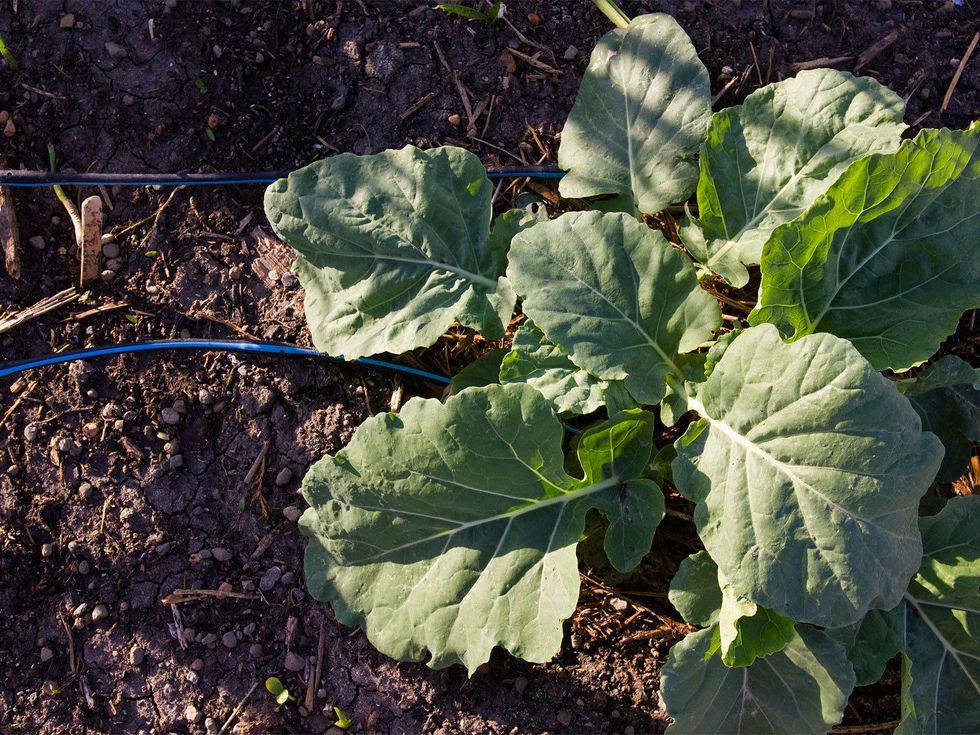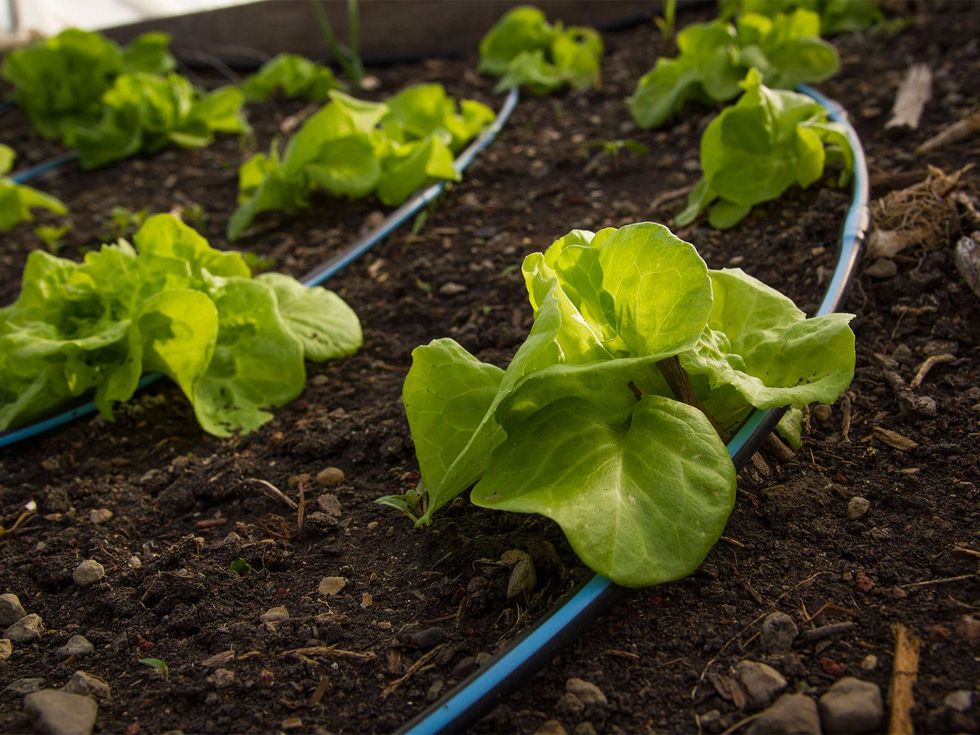The Farmer Diaries
North Texas farmer foils drought with rain and barrels
One memory I won't soon forget is the record-breaking heat wave of 2011. We endured 80 consecutive days of temperatures at 100 degrees or higher, and it destroyed nearly my entire crop. No matter how hard I tried to save the melons, tomatoes and squash, everything died or fell dormant. All my work was literally fruitless.
Food production is a water-intensive sport. The USDA estimates that 80 percent of water consumed in the country is used for agriculture. The two sources are rain and local lakes, streams and aquifers. When there is no rain and the lakes dry up, growing food in Texas is an uphill battle.
With the U.S. drought monitor indicating a severe drought across the state, it might seem that my declaration of food independence and attempt to break out of the unsustainable agricultural system in America are a set up for failure. But I have a plan.
Roll out the barrels
A while back, my father built a 9,000-gallon rainwater-harvesting system that collects rainfall from the gutters of a building. The water goes from the gutters into four black tanks, cleverly positioned near the garden; it takes about three good storms to fill them up. The goal is to use this water for the garden and never squander even a cup of potable water from the tap. To conserve resources and avoid costly utility bills, tap water is reserved for drinking, cooking and bathing.
But even 9,000 gallons of stored water is a drop in the bucket for my 3,000-square-foot garden plot; if you were to calculate it, that comes to about three gallons per square foot for a whole summer, were we subjected to another heat wave — still not enough. For this reason, my father, the pioneer of my farming venture, fitted each of the raised garden beds with a drip irrigation system.
Drip irrigation is what the term implies. A series of narrow hoses are pierced with tiny holes that squirt out drops of water at the base of each plant. By slowing the release of water and targeting its point of release, drip irrigation gives the soil time to absorb the water without runoff and allows us to put water right where it's needed: in a small circle around each plant's roots, rather than saturating the whole garden plot, weeds and all.
Add mulch to the beds to slow evaporation of moisture from the soil, and we're ready for just about anything that 2013 can throw at us.
The tanks are full at this moment. The flexible, black and blue irrigation lines are laid among the seedlings of lettuce, kale, Swiss chard and collard greens. It’s very low tech. The only moving part is a small pump that pressurizes the water from where it comes out of the tanks and enters the water lines that transport the water to the beds.
Save every drop
Rainwater harvesting is something every homeowner can do with minimal investment in time or money. It doesn't have to be a fancy system. You can make your own with a regular 55-gallon barrel to collect and store enough water to keep a patio garden vibrant for a few weeks without hitting up your tap.
Discarded barrels aren't hard to find. I have three blue plastic barrels previously used for transporting soy sauce; large food institutions buy it that way. They’re ubiquitous and can be picked up for about $20 from someone who collects and cleans them for upcycling. Screw into the bottom of the barrel a water spigot from the home improvement store, maybe $30. And be sure to keep the barrels capped between rains to prevent algae and mosquito larvae from moving in.
A freelance project kept me from tending my garden plot this week, but coincidentally, the project involved a panel of water experts from around the world discussing the state of water resources on the planet. We're in for a tough future when it comes to water scarcity, in developing countries and in Texas alike —– not just for future generations but for this one right now.
In North Texas, if we want to continue to be able to garden, water our lawns, and avoid paying skyrocketing water bills or being subjected to water rationing, we need to start harvesting and storing our rainwater.





